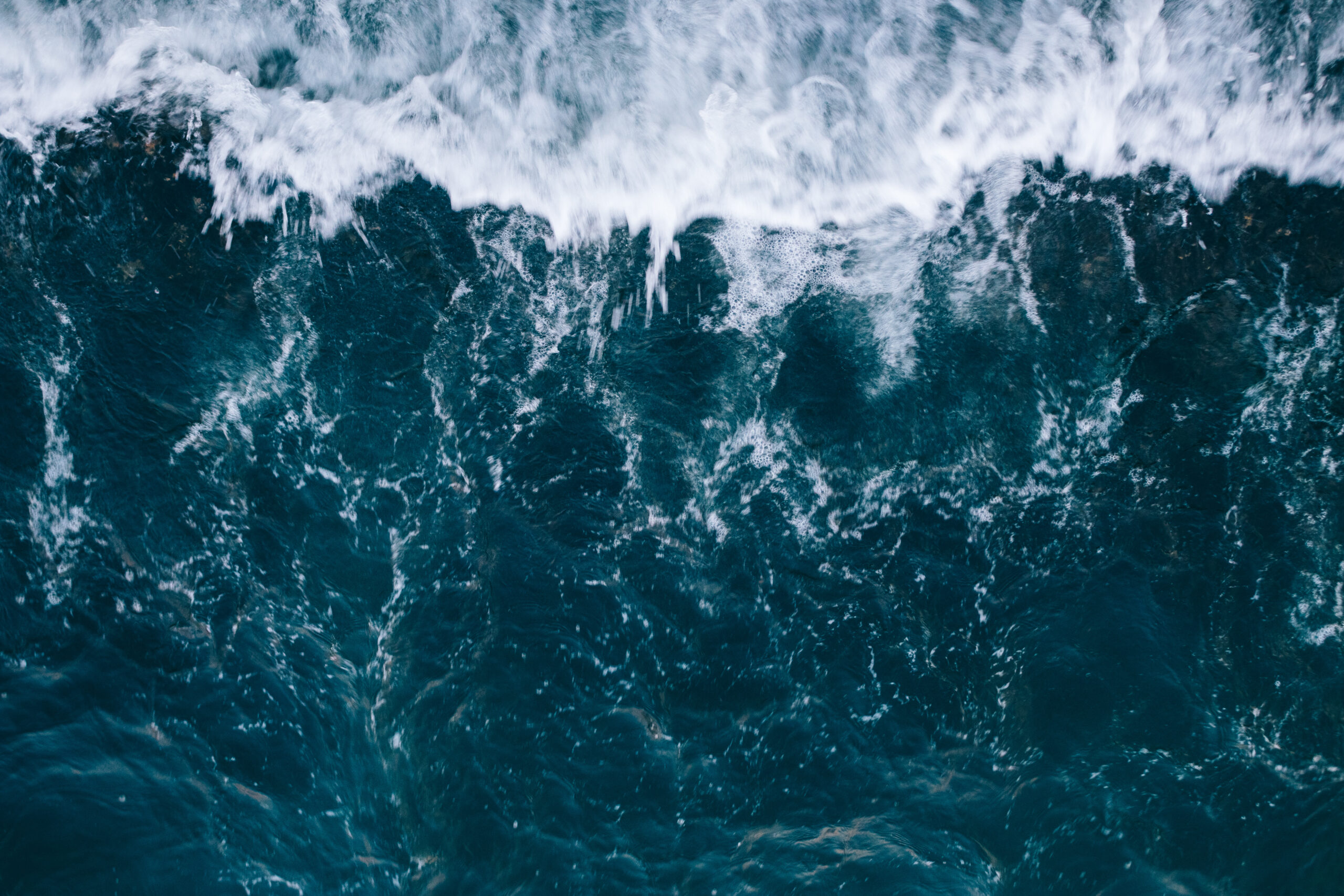PEOPLE AND PLACES: Diamond Shoals and Frying Pan: Offshore Light Towers Beckon New Missions
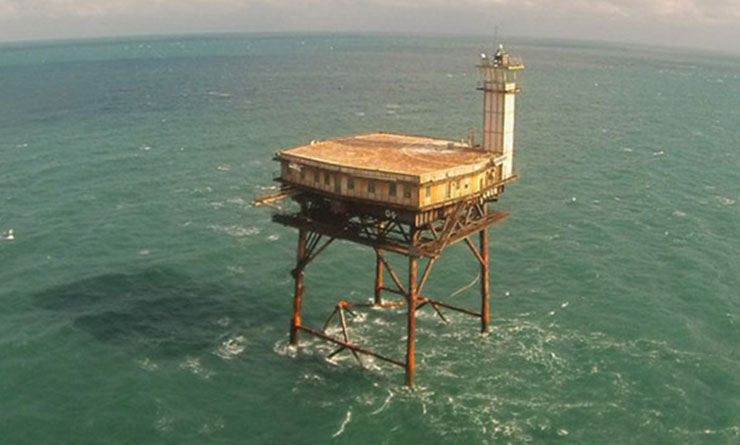
For 35 years, Diamond Shoals Light Tower performed its duty admirably, beaming a flashing light across the waved-toss Atlantic. It warned passing ships to steer clear of the shalow sandbars extending from the Outer Banks.
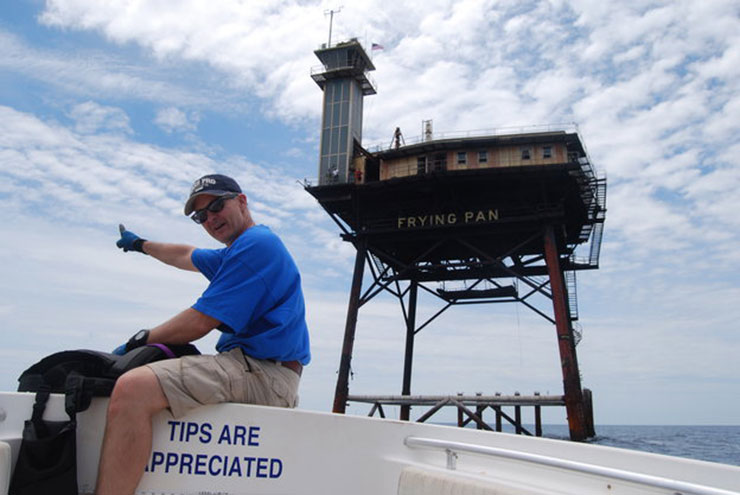
U.S. Coast Guard crews manned the tower from 1966 to 1977 until the beacon was automated. With the advent of GPS navigation systems, the Coast Guard declared Diamond Shoals obsolete in 2001, turned off its light and abandoned the tower 13 miles southeast of Cape Hatteras.
The light tower stood unattended 11 more years, awaiting dismantling. With no money to cut it down, the Coast Guard eventually decided to auction it off.
Last October, David Schneider won Diamond Shoals with a bid of $20,000. The Minnesota business executive, who had never seen the light tower except for photos posted on a federal surplus property website, became the second private owner of a North Carolina offshore light tower.
Richard Neal of Mint Hill, near Charlotte, bought the other — Frying Pan Tower, 30 miles southeast of Southport — in 2010.
TOWER RESCUED
Once doomed, both light towers are getting new missions that include becoming platforms for research miles out at sea.
At Diamond Shoals, Schneider plans to restore the corroded tower into an on-ocean center for research, development and product testing. He envisions enlisting technology partners to demonstrate wind, solar and emerging energy sources.
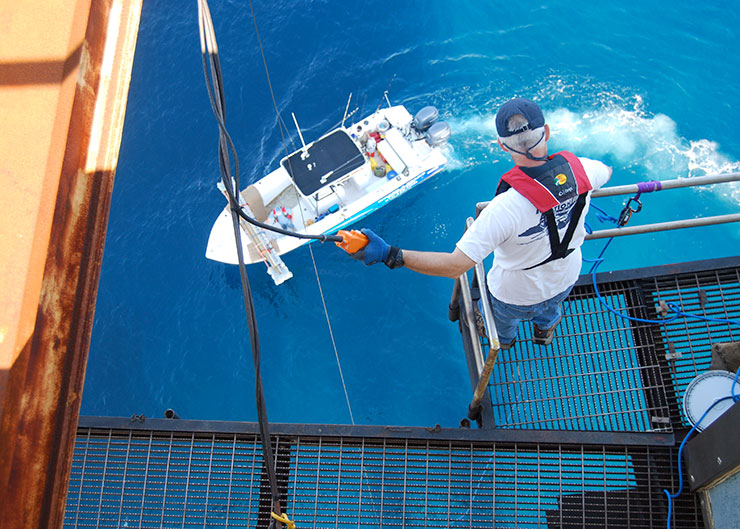
“I can also see interests from biologists, marine biologists, climatologists, and even those developing products that need to be tested in an actual marine setting — metallurgists, desalination technologies, fishing equipment, coatings manufacturers, diving equipment,” Schneider says.
First, Diamond Shoals needs work. It has languished in the harsh, salt-strewn environment with no maintenance. An engineering firm hired by the federal General Services Administration, which auctioned the 120-foot-high tower, determined primary structural elements were sound. But the firm noted four large depressions, plus several holes open to the ocean, in the flooring in the living quarters. Furthermore, the bottom staircase is gone, making access by boat difficult.
In November 2012, Schneider flew to Diamond Shoals for his first visit. He and a friend landed by helicopter, and spent six hours there. “There was just ocean everywhere. It’s incredible,” he says, marveling at the first sight of his property.
Schneider’s inspection found some sturdy walkway grating but a deteriorating maintenance deck, a broken window, and lots of debris in the seven bedrooms, rec room, galley and storage rooms. “Some things were better than I thought, some things were worse than I thought,” he recalls.
He plans another trip this spring, this time by boat. To climb aboard, Schneider left a 75-foot rope ladder and a hand-operated winch to hoist people and cargo.
Restoring the tower means not only making it safe but also reviving basic services. The engineering firm estimated renovations would cost $2.3 million. That includes $1 million to rent a jack-up barge to perform work. But Schneider believes he can do repairs for much less, in part by tapping into volunteer welders, electricians and mechanics. They, in return, would get time to fish and relax on his high-seas hideaway.
MAKING HEADWAY
That’s what Neal did during the past two years to get Frying Pan Tower up and running. Though Frying Pan is still a work in progress, Neal says a cadre of volunteers has kept renovation costs at a fraction of an engineering firm’s estimate of $1.3 million.
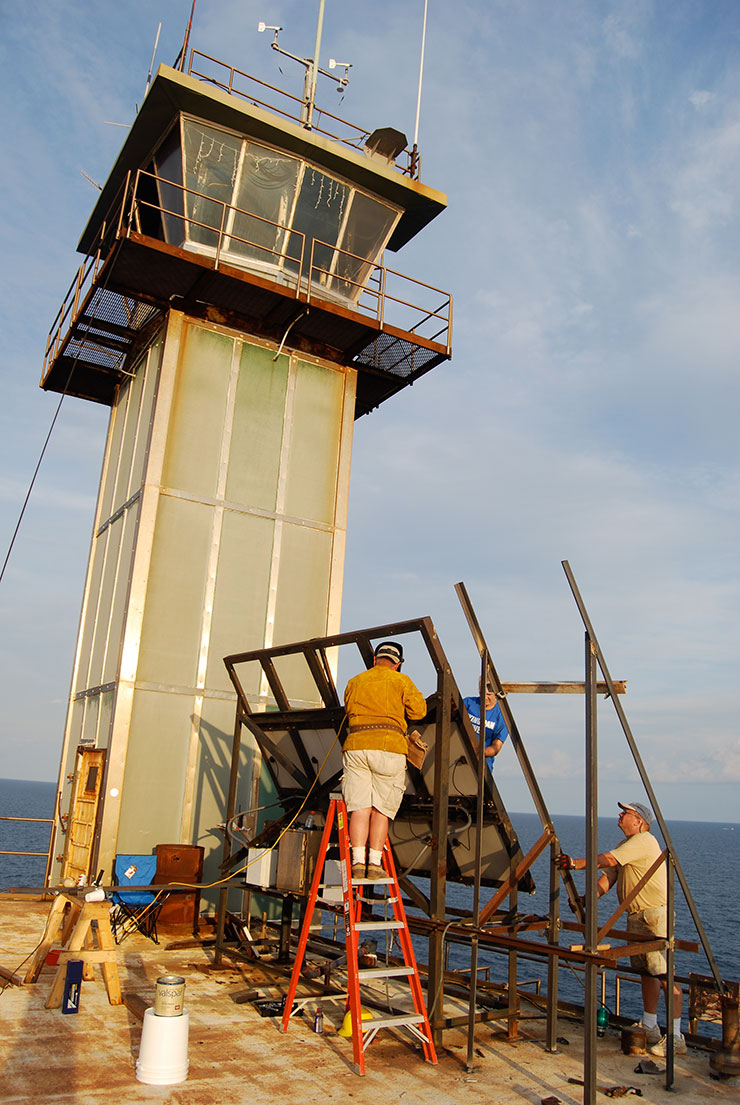
Neal paid $85,000 at auction for Frying Pan Tower, a twin of Diamond Shoals. Similar to an offshore oil-drilling platform, they were built for $2 million each. Frying Pan was erected in 1964.
Neal’s original aim was to transform Frying Pan into a bed-and-breakfast at sea, catering to the adventurous. With the planned additions in 2013 of a mooring buoy and a lower staircase, thus making access by boat easier, he can appeal to sport fishermen and scuba divers for overnight or weekend stays.
At the same time, he’s broadening the facility’s scope into a platform for research. An environmental consulting firm, Normandeau Associates, has leased space for thermal and acoustic sensors that detect birds and bats so the firm can characterize potential collision risks from offshore wind farms. And in late 2012, Neal lined up the University of Miami to conduct shark tagging.
“It should be something people can use,” he says of the tower.
Both towers could benefit from the development of offshore wind farms. Along the North Carolina coast, potential offshore wind lease areas have been identified but no lease sales have been scheduled by the Bureau of Ocean Energy Management. (See the related tiding on page 5 of the magazine.)
“We’re very close to seeing the beginning of lease sales,” predicts Brian O’Hara, president of the Southeastern Coastal Wind Coalition, based in Raleigh. In 2013, BOEM plans to sell competitive leases for wind farms off the coasts of Massachusetts, Rhode Island and Virginia, a process that took 10 to 16 months from the initial BOEM Call for Information and Nominations for the three states.
Neal said based on informal conversations with state energy officials, he anticipates leasing space at Frying Pan for instruments to measure wind speeds to provide data for wind farm companies. The average wind speed at the tower is 12 mph.
LONG-TERM PLANS
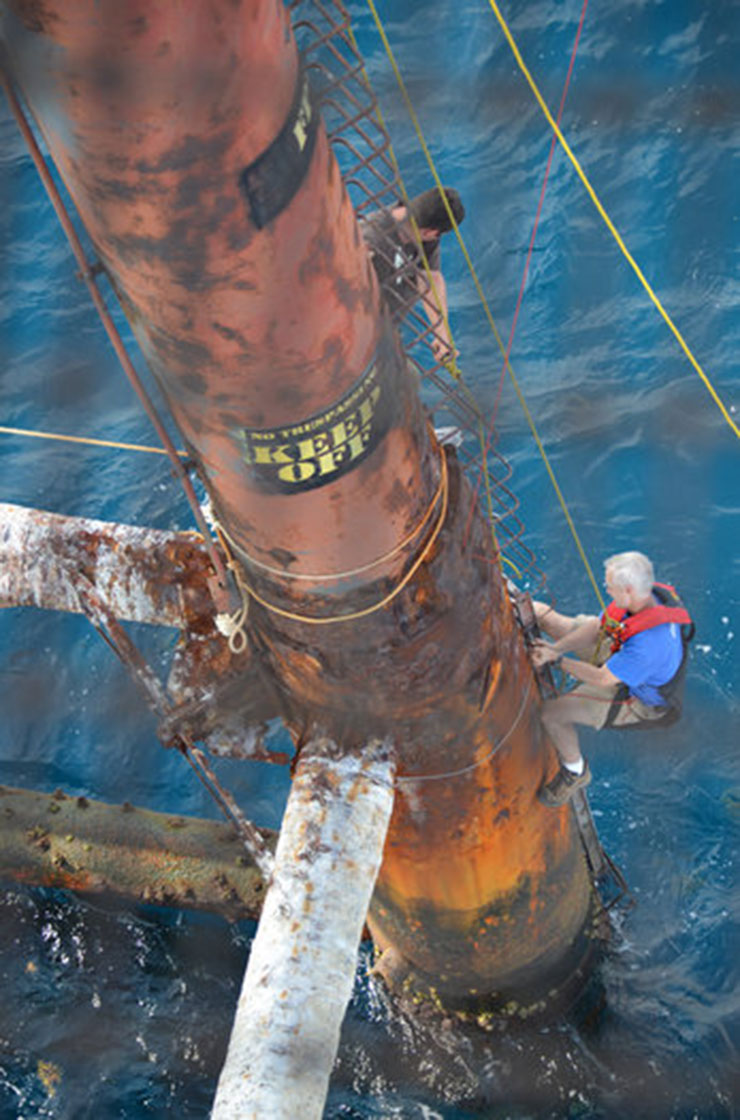
At Diamond Shoals, Schneider’s short-term goal is to clear out junk, replace missing panels and install hot water. He says he hasn’t worked up a budget yet. Diamond Shoal’s timetable will turn on how quickly potential academic, corporate and technology partners begin participating. “We could be doing research in 12 months,” he predicts.
Schneider’s own company, Zap Water Technology, which makes a nontoxic sanitizing agent, is the first partner.
While on the tower, Schneider videotaped one- to two-minute spots to invite Minnesota-based companies and other potential technology and corporate partners to participate in the project.
Schneider says he doesn’t intend to fix up the tower and flip it for a quick profit. His business model for Diamond Shoals, he explains, is for a self-sustaining co-op-type venture. He believes the tower’s strategic location makes it intrinsically valuable.
“It’s too great of a structure to let it sit out there and rust away,” he says. “My interest is to make it into a place for betterment.”
For more information about the towers, visit: www.diamondshoalslight.com for Diamond Shoals and www.fptower.com for Frying Pan.
Light towers and lightships
The purchase of Diamond Shoals and Frying Pan light towers preserves a legacy of North Carolina’s maritime history that dates to the 1800s. Prior to the sales, both towers had been slated for demolition.
The towers marked the waters around treacherous shoals. Diamond Shoals sticks out from Cape Hatteras. Frying Pan Shoals juts out from Bald Head Island like a long-handled pan.
The light towers were the most recent sentinels that have stood guard to warn mariners of dangerous, shifting sandbars in the Graveyard of the Atlantic. Today, ships rely on GPS technology to avoid the shoals.
The towers were preceded by lightships, basically floating lighthouses. The first, at Diamond Shoals, was put into service in 1824. That ship wrecked at Ocracoke Inlet in a storm in 1827, according to Lighthouses of the Carolinas by Terrance Zepke. Several lighthouses or buoys were moored at the shoals from 1827 to 1897, when the Coast Guard began continuously stationing lightships there.
In 1918, during World War I, the crew on Lightship LV-71 radioed nearby ships about the presence of a German submarine. The crew safely left the lightship. The sub, provoked by the warning message, shelled the ship and sank it, according to www.uscglightshipsailors.org.
A lightship had been stationed at Frying Pan Shoals since 1854, except for intervals that included World War II, according to the Coast Guard. One of the last surviving lightships, Lightship LV-115, has been docked on the Hudson River in New York City since 1989. It is open for tours and can be booked for parties and special events, according to www.fryingpan.com.
The lightships were replaced by Frying Pan Light Tower in 1964 and Diamond Shoals Light Tower in 1966.
To learn more about Diamond Shoals and Frying Pan light towers, check out:
- Man pays $20,000 for abandoned Diamond Shoals’ light tower written by Jack Horan in the Charlotte Observer.
- New owner wants to preserve, share light tower by Sam Walker in The Outer Banks Voice.
- Minn. man buys surplus NC light tower for research by Martha Waggoner with the Associated Press.
- Diamond Shoals Light Station – Light Tower on YouTube.
- Frying Pan Shoals Light Tower – a new breed of bed and breakfast by Ken Little with StarNews Online.
- Larry’s Look: Frying Pan Shoals Light Tower on WCNC.
- Frying Pan Shoals: Light Tower Evokes Bygone Era by Ann Green in the Early Summer 2004 issue of Coastwatch.
This article was published in the Winter 2013 issue of Coastwatch.
For contact information and reprint requests, visit ncseagrant.ncsu.edu/coastwatch/contact/.
- Categories:
